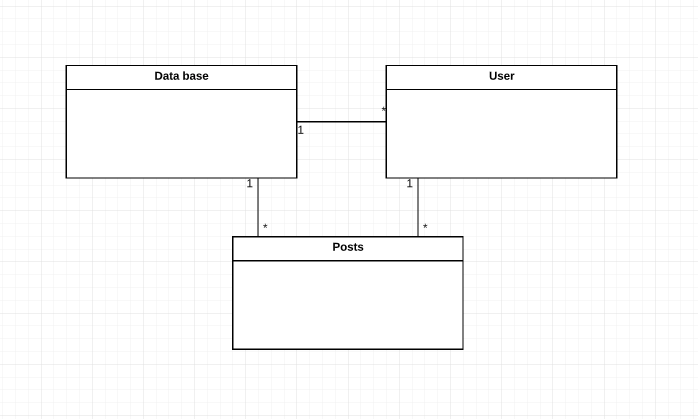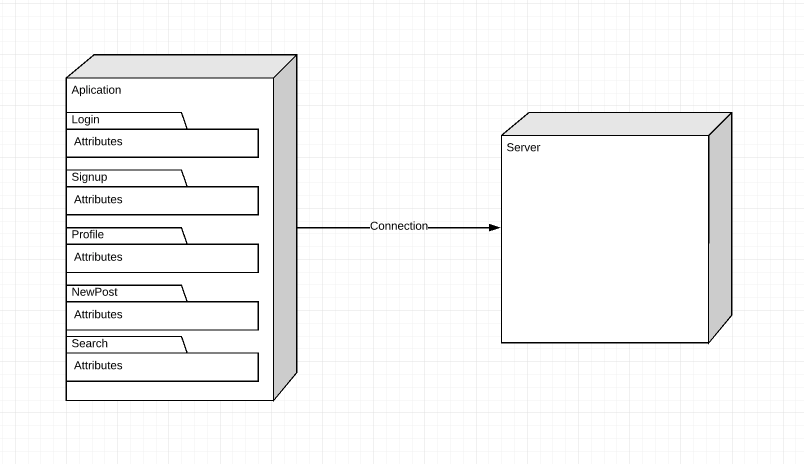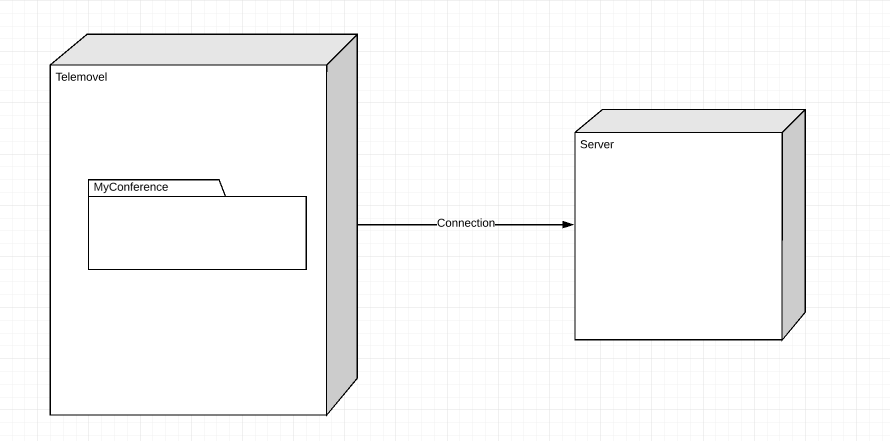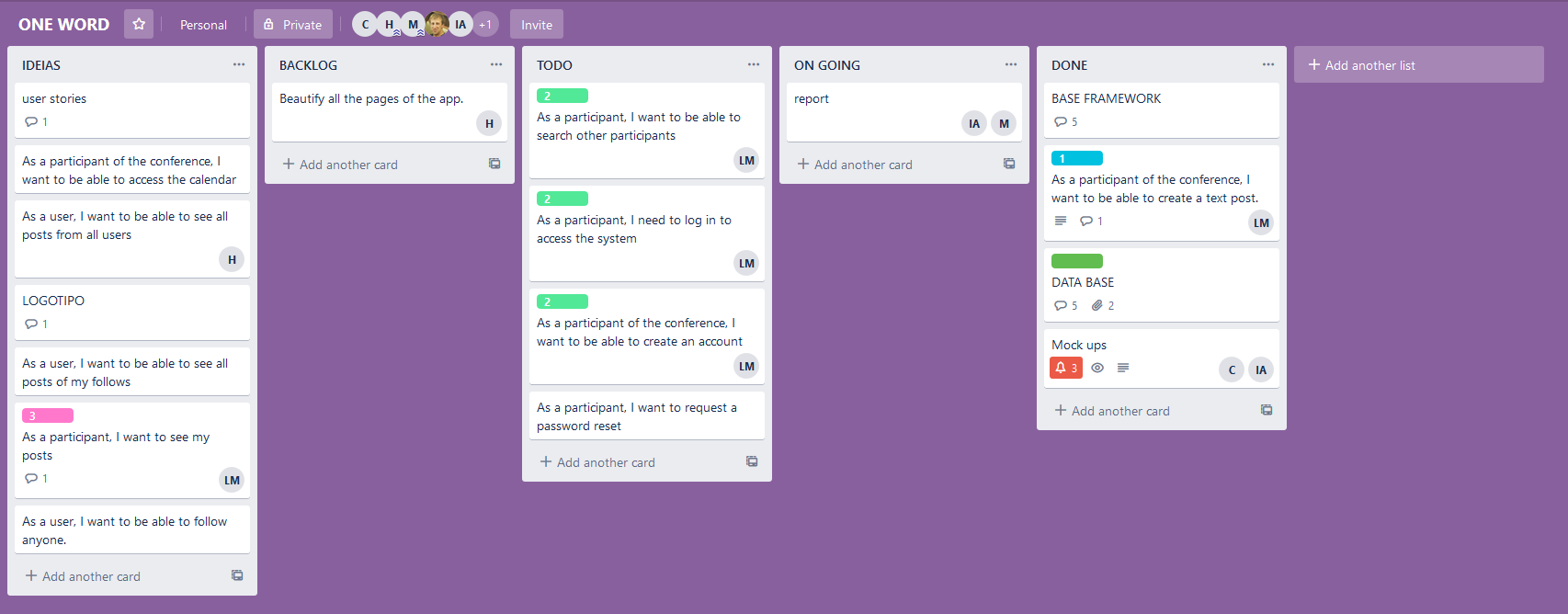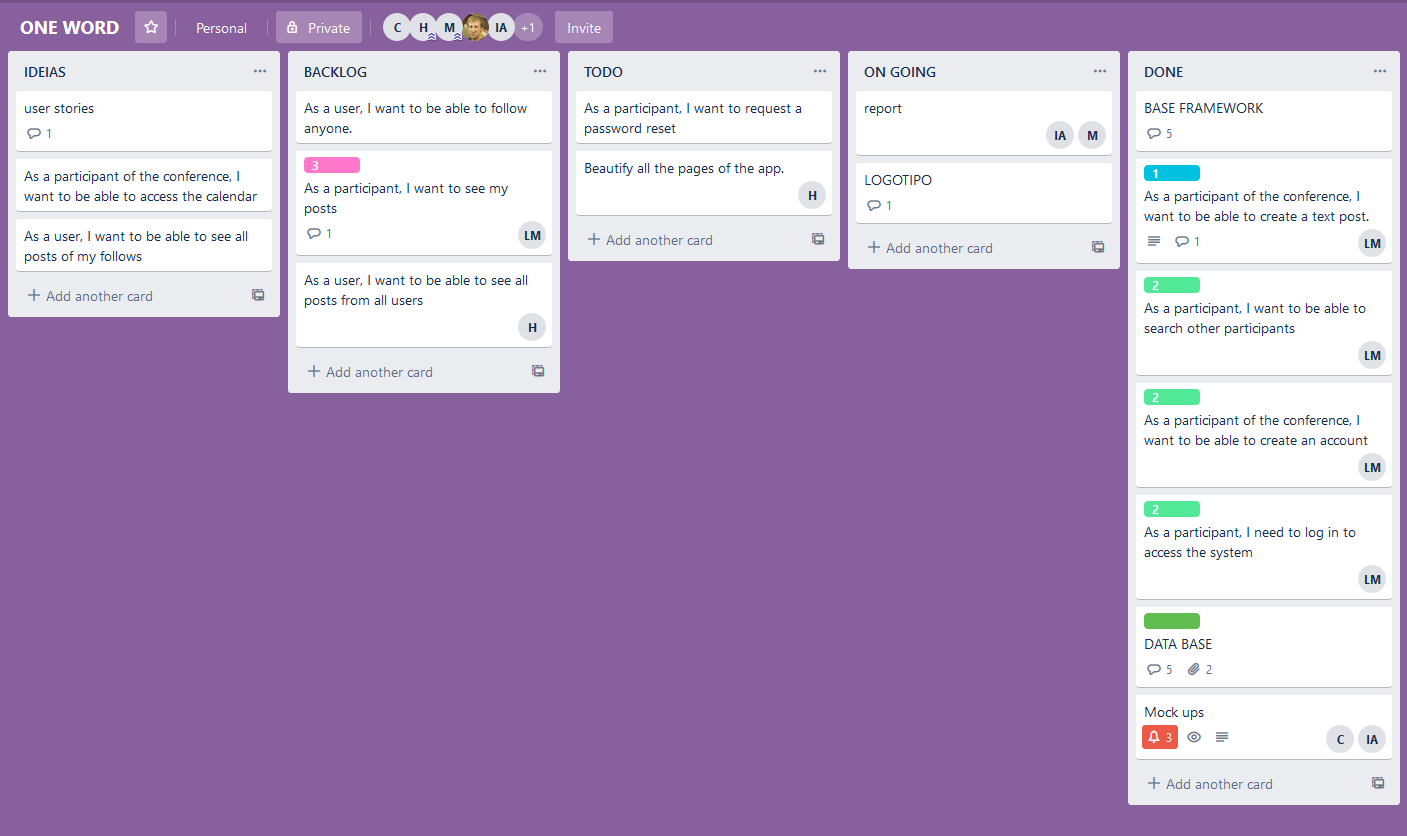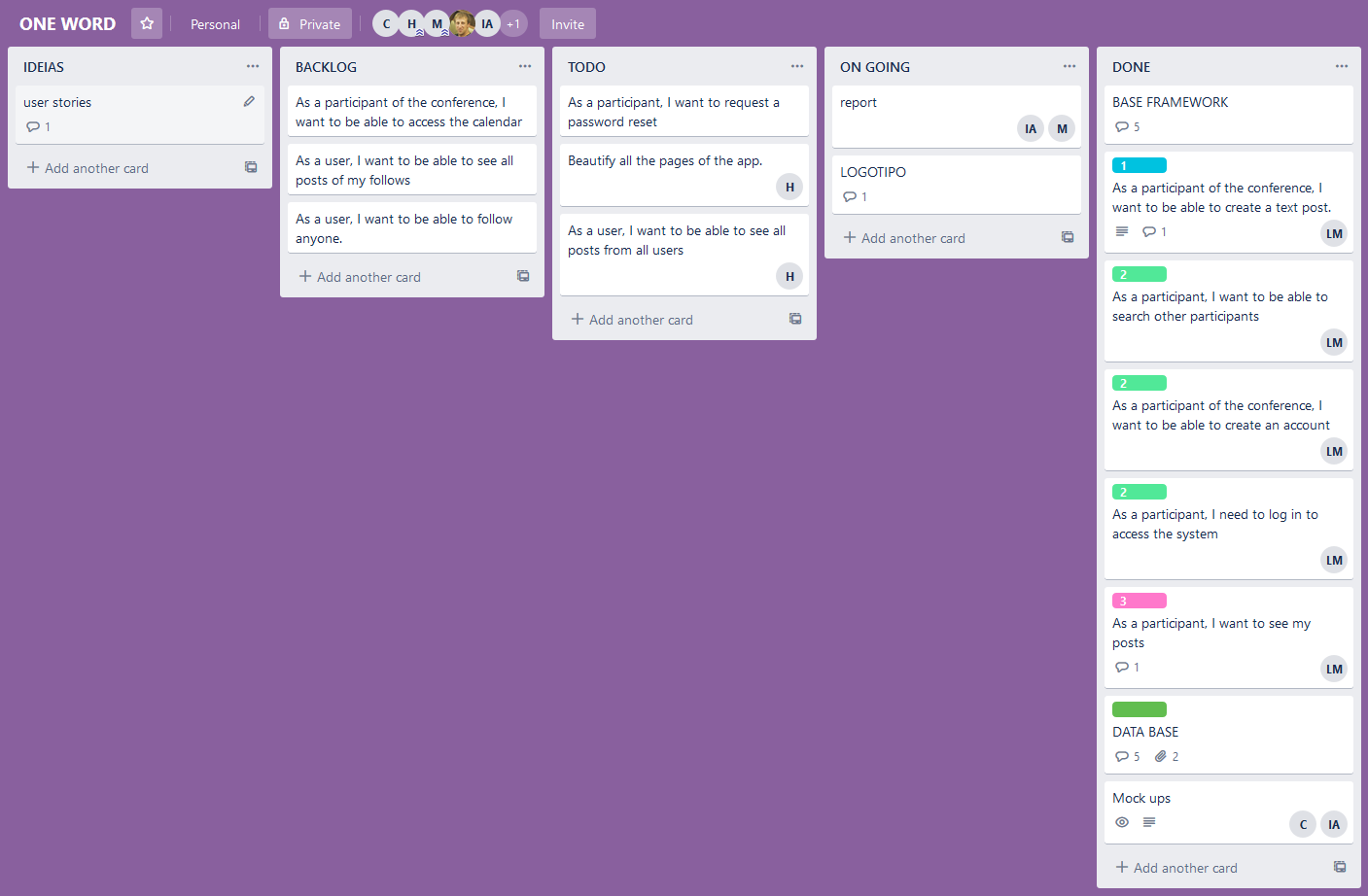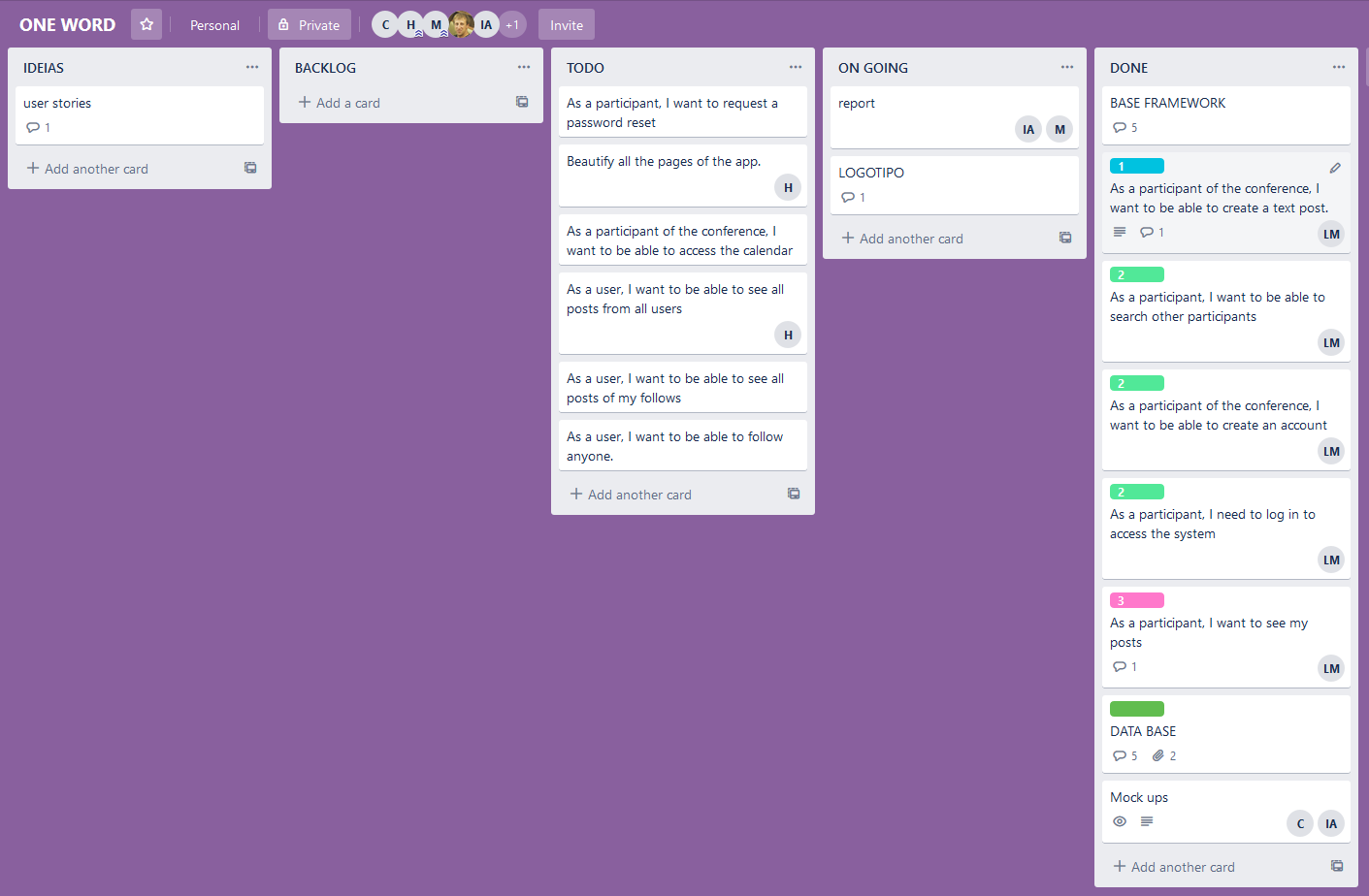Welcome to the documentation pages of MyConference of openCX!
You can find here detailed about the (sub)product, hereby mentioned as module, from a high-level vision to low-level implementation decisions, a kind of Software Development Report (see template), organized by discipline (as of RUP):
-
Business modeling
-
Requirements
-
Architecture and Design
So far, contributions are exclusively made by the initial team, but we hope to open them to the community, in all areas and topics: requirements, technologies, development, experimentation, testing, etc.
Please contact us!
Thank you!
Henrique Maciel de Freitas - 201707046
João Pedro Pinheiro de Lacerda Campus - 201704982
Luís Pedro Rodrigues de Morais - 200800621
Maria Inês Fernandes Alves - 201605335
Miguel Silveira Rosa - 201706956
Greatly improve your conference experience while sharing memories and connecting with others.
Isn't connecting with other people one of the best parts of a conference? Our app, MyConference, makes sure that your experience is the best it could possibly be. Much like any other social network, you are able to add people at the conference as friends, create new posts - perhaps some thoughts about that amazing talk you just went to, or even a picture of your friends attending the event - and, naturally, comment and like your friend's posts. Besides that, our app will allow you to check all the events currently happening so you won't miss anything!
As a social network, MyConference aims at creating a way to let people interact and share experiences, making them able to create posts with pictures about their experience.
Security is something very important to MyConference. Once you create a post, nobody can alter your post, moreover nobody can create a post in your name, making your account truly yours.
MyConference focus on being user friendly. To this end, posting and creating an account is extremely streamlined, being both simple and fast.
Create an account
-
Actor: Conference attendee
-
Description: The user is able to create an account on our app.
-
Preconditions and postconditions:
-
The user attending the conference must create an account to use our app.
-
After creating an account, said account and its data is added to the data base.
-
Normal flow: The user inputs the required information and their account is created, adding its content to the app's data base.
-
Alternative flows and exceptions: If the user inputs invalid information that, for example, already belongs to another used and thus to the data base, they should retry creating their account.
Log in the account
-
Actor: Conference attendee
-
Description: The user is able to log in on their account.
-
Preconditions and postconditions:
-
The user attending the conference must have an account previously created.
-
After logging in correctly, the user is able to access the app and its features.
-
Normal flow: The user, when writing the correct info about their email and password, gains permission to access the rest of the app.
-
Alternative flows and exceptions: If the user writes either their incorrect info or one that doesn't exist on the data base, they should retry logging in on their account.
See other people's posts
-
Actor: Conference attendee
-
Description: The user is able to see other people's posts on the main page.
-
Preconditions and postconditions:
-
The user attending the conference must be logged in on their account and follow the people whose posts they want to see.
-
While on the home page, the user can see all the posts of the users they follow.
-
Normal flow: The user, while logged in and on their home page, should be able to see all the posts of the users they follow.
Create a post
-
Actor: Conference attendee
-
Description: The user is able to create a post with and image and a description.
-
Preconditions and postconditions:
-
The user attending the conference must be logged in on their account.
-
After creating a post, its info is then added to the database.
-
Normal flow: The user, while logged in, can click the create a post button on the icons bar and create a post with a picture and text.
- As a participant of the conference, I want to be able to create a post.
Value: Must have
Effort: L
Given that the user has already logged in the account, when he is a participant of the conference, then he is able to create a new post with an image.
- As a new user, I want to be able to create an account.
Value: Must have
Effort: M
Given that the user has interest in the events of the conference, the user wants an account to see all the posts and to identify his own posts.
- As an already registered user, I want to log in to access the system.
Value: Must have
Effort: M
Given that the user is already registered through an account, then he is able to log in to access the system.
- As a user, I want to be able to log off my account.
Value: Must have
Effort: M
Given that the user is already registered through an account and is also logged in, then he is able to log off the session.
- As a user, I want to be able to edit my profile. This includes changing my current profile picture and basic info such as name, date of birth...
Value: Must have
Effort: L
Given that the user is logged in, then he is able to edit his profile, namely name, picture, date of birth, etc.
- As a user, I want to be able to add someone else as a friend.
Value: Could have
Effort: M
Given that the user is already logged in, then he is able to see his friend's profile, namely name, picture and posts.
- As a user, I want to be able to check my friends' profiles and like/comment their posts.
Value: Could have
Effort: L
Given that the user is already logged in and his friend also has an account on the app, the user is able to add as his friend and like/comments his posts.
- As a user, I want to be able to check my calendar and the conference's event board.
Value: Could have
Effort: L
Given that the user is logged in, the user is able to check the conference events schedule.
- As a user, I want to be able to upload a story.
Value: Could have
Effort: L
Given that the user is logged in, the user is able to publish a quick story.
- As a forgetful user, I want to be able to request a password reset.
Value: Could have, not really necessary
Effort: M
Given that the user has already an account and is a human being that forgets things, he can reset his password and change it as much as he needs.
Mockup of the main page of the app
Mockup of a user's profile
Mockup of creating a post
Mockup of the event board
The main focus of our architecture is based on the communication between the app and the server. This structure is due to the fact that almost all (if not all) of the user's possible interactions require communicating with the server's data base, be it the user creating a new post, or simply seeing all the posts of the other users: communicating with the server is essential.
The design of our server is established by elements "Collections" of Firebase. We chose this design because it was compatible/easy to implement with Flutter.
In our app we kept a simple and comprehensible design for the user. With this in mind, the functionalities of our app are separated into individual pages, making sure the user's experience is simple and new functionalities are relatively easy to implement.
For the logical part of the architecture we decided to segregate the features, puting a feature in each page of the app. This decision in desing was made to simplify the app for user, and to be more easy to implement more features in the future.
Until now we have created 5 diferent modules, each one having a unique interaction with the server.
The physical structure is simple, having only a route of communication between the app and the server - the app then gains access to the data base, being able to extract all the necessary information for its various functionalities.
We aimed to create user stories as closely based on what a person attending the conference would want from a social app. Essentially, we focused on social interaction and creativity, namely on features such as creating posts to share conference moments with friends, following other people and being able to see their posts, freely editing a user's profile, etc.
Iteration 1
In this iteration we worked on the "create a post" feature, which we considered the main focus of our app.
Iteration 2
In this iteration we worked on the register and login features and on a search system so the user can look up other people using the app.
Iteration 3
In this iteration we made sure the user can see their posts.
Iteration 4
In this iteration we continued working on the user's profile and tried to improve the app's layout.
There were some features initially planned that we chose not to implement - namely the event board feature/calendar. We think that while these would be interesting and unique features, our app is more of a "social" app and so we focused on user interactions.
We mainly test our app using it in real time. We did not establish tests due to our app being straightforward and simple to use.
The tests were made in between each new feature added, to certify the older features and whether the new ones were working as intended.
We tried to follow the Github flow as much as possible, creating branches (userProfile) and releases/tags for each iteration, as well as making understandable and significant commits.
The following pictures represent our Trello's state in each iteration, with labels for each one of them.
Iteration 1:
Iteration 2:
Iteration 3:
Iteration 4:





